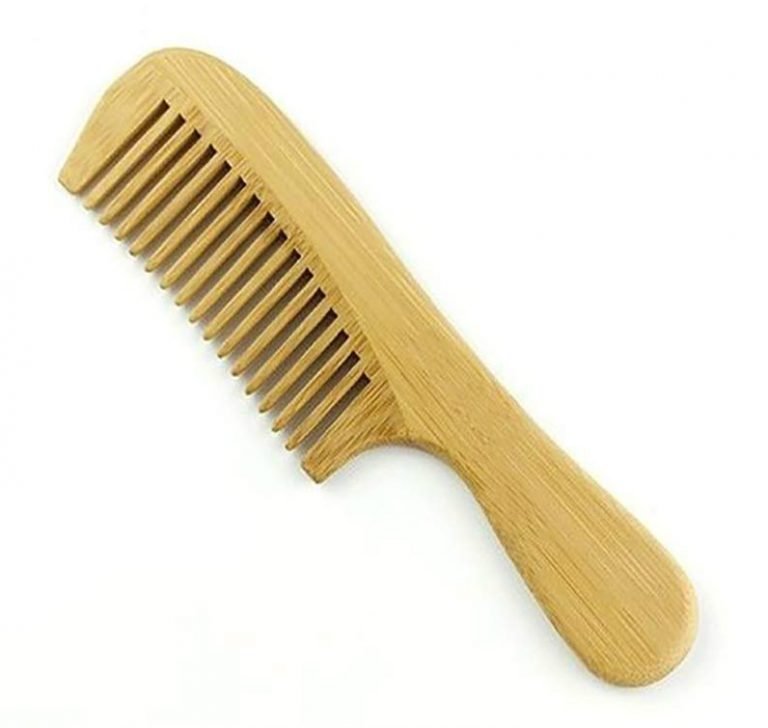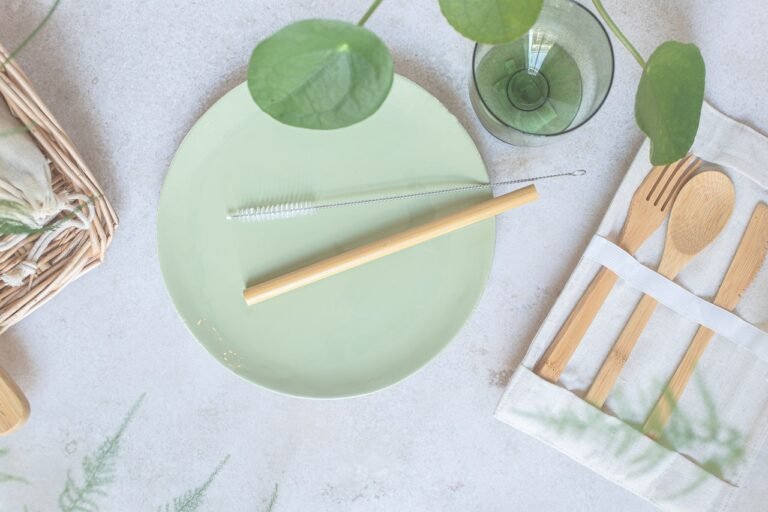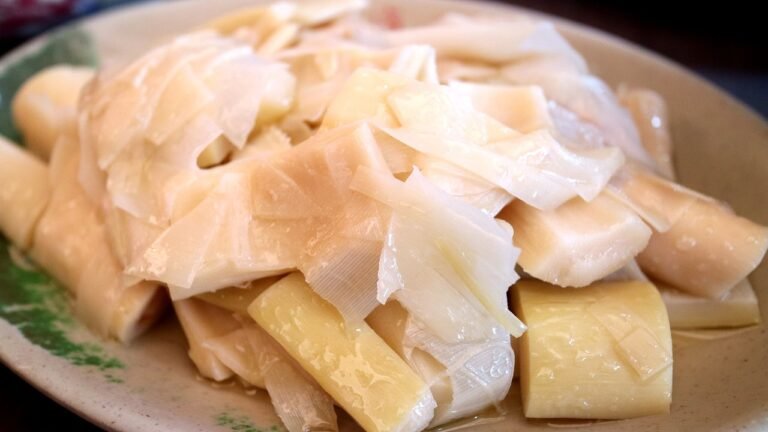How Do I Cook Rice in a Bamboo Steamer

0Shares
Do you want to know how to cook rice using a bamboo steamer? Cooking rice in a bamboo steamer is a traditional technique used for generations in several Asian nations. This cooking method is not only nutritious, but it also improves the taste and texture of the rice. Bamboo steamers are composed of natural bamboo and are intended to retain moisture while enabling steam to flow evenly throughout the cooking process.
Using bamboo steamer baskets to cook rice is the gentlest method. They excel in preparing nutritious meals without sacrificing taste, texture, or nutrition. The steaming baskets feature latticed lids that confine the steam and bottoms composed of thin, parallel slats that enable steam to flow through them. With minimal stirring or excessive starch release, this function enables the steam to circulate throughout the rice grains without making them sticky.
This article will take you through steaming rice in a bamboo container. Whether you are a seasoned chef or a novice, this technique is simple and consistently provides excellent and fluffy rice. So let’s get started!
What is Bamboo Steamer
The bamboo steamers emerge from an accumulation of interconnecting baskets stacked on one another. What is a Bamboo Steamer? A pot is present. (full of boiling water) below the whole thing. The open ridges at the bottom of each basket allowed steam to ascend while heating the rice within the steamer.
Looking into bamboo steamers is extravagant, and you may also believe they are not essential kitchen appliances. However, once you fully understand how to steam rice in a bamboo steamer, you’ll use it more frequently than you might have thought. Like roasting and baking are well-known in American and European food, steaming is a common cooking technique in Asian cuisine.
Using a bamboo steamer, you can steam a variety of things. Using steam to cook and reheat food is a fantastic idea. You may quickly restore freshness to your food by steaming it, which helps to return moisture to your meal. Another incredible quality of bamboo steamers is that their lids do not collect moisture, which might leak into your meal and alter its look, flavor, or texture.
How to Use a Bamboo Steamer to Cook Rice

Now, let’s learn how to steam rice correctly in a bamboo steamer.
Put Water in a Wok
The first thing you must do is add enough water to a wok or other small pan to fill it halfway. Ensure the water is at least 14″ to 12″ over the steamer’s bottom rim. Carefully ensure the water rises sufficiently high to cover your steamer’s bottom in water and prevent it from burning. Your steamer has an interior bed, so it needs to be low enough so that neither the interior bed nor the food placed on it comes into contact with the bubbling water.
Another thing to note is that if you use a brand-new bamboo steamer, you may test it out first to see whether it scorches. Soak the steamer’s bottom rim for around thirty minutes to achieve this. Additionally, after using it, you should completely pat it dry before storing it.
It would be best to use a wok when adding anything here with the bamboo steamer since it is the best instrument. It’s because a narrow wok may be used in this situation to boil water and easily control the temperature of the water. A wok also has a broad rim that can support bamboo steamers of various sizes.
Fill the Steamer With Rice
Rice should be placed in the steamer. It’s time to put your rice in the steamer at this point. Before you put the rice into your steamer, make sure you give it a thorough wash. To steam rice, you will also need the same amount of water as rice. For instance, you need to add three cups of water while steaming three cups of rice.
Therefore, rinse your rice under the faucet until the water appears whitish. It will guarantee that the rice’s surface starch is eliminated. The rice should then be immersed in water for two to three hours. Additionally, if you want to, you can wait longer.
Cover Your Bamboo Steamer
The bamboo steamer baskets must be lined after completing steps one and two. The bamboo steamer has several stages. Depending on how much food you wish to steam, you can use 1, 2, or 3 of the steamer’s three settings simultaneously. You’ll need anything to line the steamer with, such as cotton fabric or big vegetable leaves like cabbage or banana leaves. You’ll be able to stop your food from adhering to the bamboo.
Drain the Rice
We are nearly finished. The rice must now be drained before being placed in your steamer. Carefully do this procedure to avoid spilling anything when draining the rice.
Place The Bamboo Steamer in Wok
So, from the two, you may select one. While placing the steamer in the wok, you may warm the water to ensure it is simmering, and on the other hand, insert a steamer into the wok while the water is still cold. After that, please turn on the heat and let it gradually increase.
Give Your Food Time to Steam
You will notice the vapor as the water in your wok simmers. The most crucial thing in this situation is not skipping rice cooking. You must monitor the entire operation and periodically check the water level. It will take around thirty minutes to steam rice adequately. Check if your rice is cooked to your liking, and then retrieve your steamer from the pan. You have it now! After removing the rice from the steamer, you can easily serve it.
How to Make Your Steam Rice More Interesting
Do you want to add some flavor to your steamed rice? Here are some helpful suggestions to enhance the flavor of the rice.
◽️Instead of using water to steam your rice, use coconut milk or tea. Additional taste and scent will be added.
◽️If you want to use water, mix a little salt into the water as well.
◽️Choose vegetable, chicken, pig, or mushroom stock for additional umami.
◽️Making your rice more flavorful by adding spices, fried onions, tomato, or any other taste you like.
Using Bamboo Steamers for Cooking
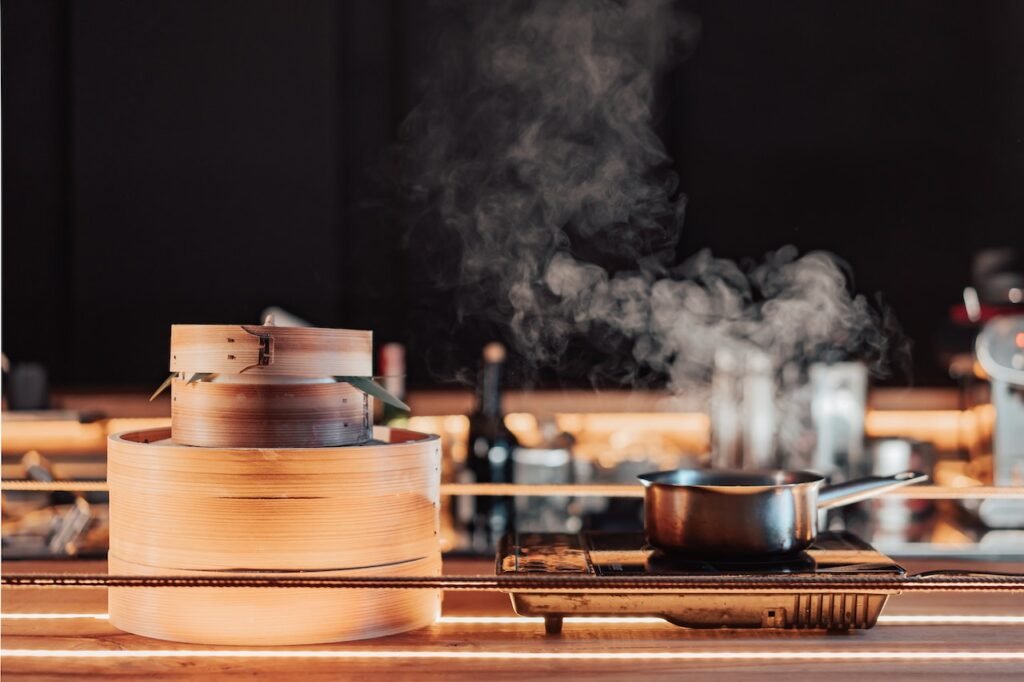
A steamer basket may cook various foods, such as dumplings, shellfish, chicken, bread, sticky rice, and more. When using a bamboo steamer, the food is put in a basket typically lined with cabbage leaves and parchment paper, and the basket is then put inside a pot with water that has already started to steam. The bamboo strip lattice forming the bottom of the baskets allows steam to enter and cook the food.
Using Bamboo Steamer Equipment
Can you use a bamboo steamer over a pot? You may be thinking. Yes, that is the answer. You may use a bamboo steamer in conjunction with various kitchen appliances. Here is some equipment you could find useful if you want to attempt cooking with a bamboo steamer.
Pot
With a bamboo steamer, you may use a stainless steel, nonstick, or enamel saucepan. If you want water to enter the meal after it boils, don’t overfill it with water.
Saucepan
As long as the saucepan’s diameter matches the steamer’s, it can be nonstick or made of stainless steel.
Wok
This is a useful item to use with a bamboo steamer since the steamer can sit on the wok without having a rack because of the sloping edges of the tool. Just ensure the steamer’s diameter is less than the wok’s.
Skillet
If the diameter of a skillet is at least marginally more than the steamer, you can use it similarly to a saucepan. Keep an eye on the water level when steaming because you can only use a limited quantity of water when using a skillet.
Small Rack
The bamboo steamer should rest on top of the rack, which should be placed at the base of the pot or pan.
Benefits of Cooking Rice in a Bamboo Steamer
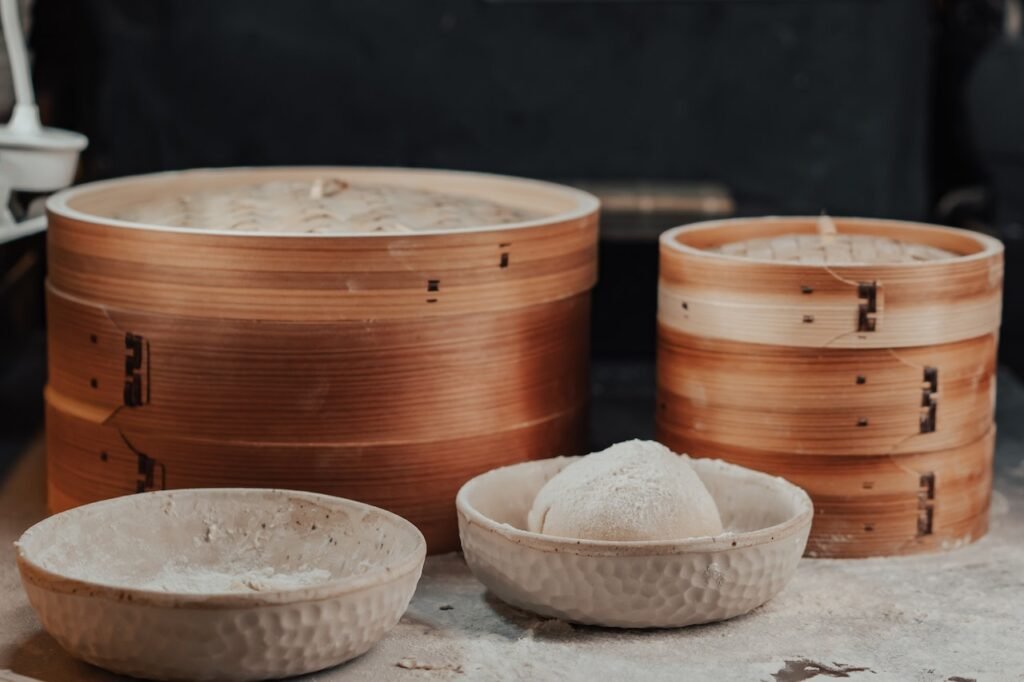
There are several advantages to steaming rice in a bamboo vessel, including:
Conserving Moisture
The rice has a softer & fluffier texture due to the bamboo steamer’s ability to retain moisture in the grain.
Even Heat Distribution
Because bamboo is porous, steam can circulate evenly inside the steamer, ensuring the rice is cooked uniformly.
No sticking
Applying oil or cooking spray when using a bamboo steamer is unnecessary, which might make the rice adhere to the pan. Less clutter is created, making cleanup simpler.
Healthier Cooking
Unlike other cooking techniques involving oil or frying, steaming rice in a bamboo vessel is healthier.
Versatility
Bamboo steamers are a terrific addition to any kitchen since they are adaptable and can be used to prepare various items, such as vegetables, seafood, and dumplings. Overall, boiling rice in a bamboo steamer may provide a tasty, healthier dish with a soft, fluffy texture that is hard to create with other cooking techniques.
Tips for Cleaning Your Bamboo Steamer
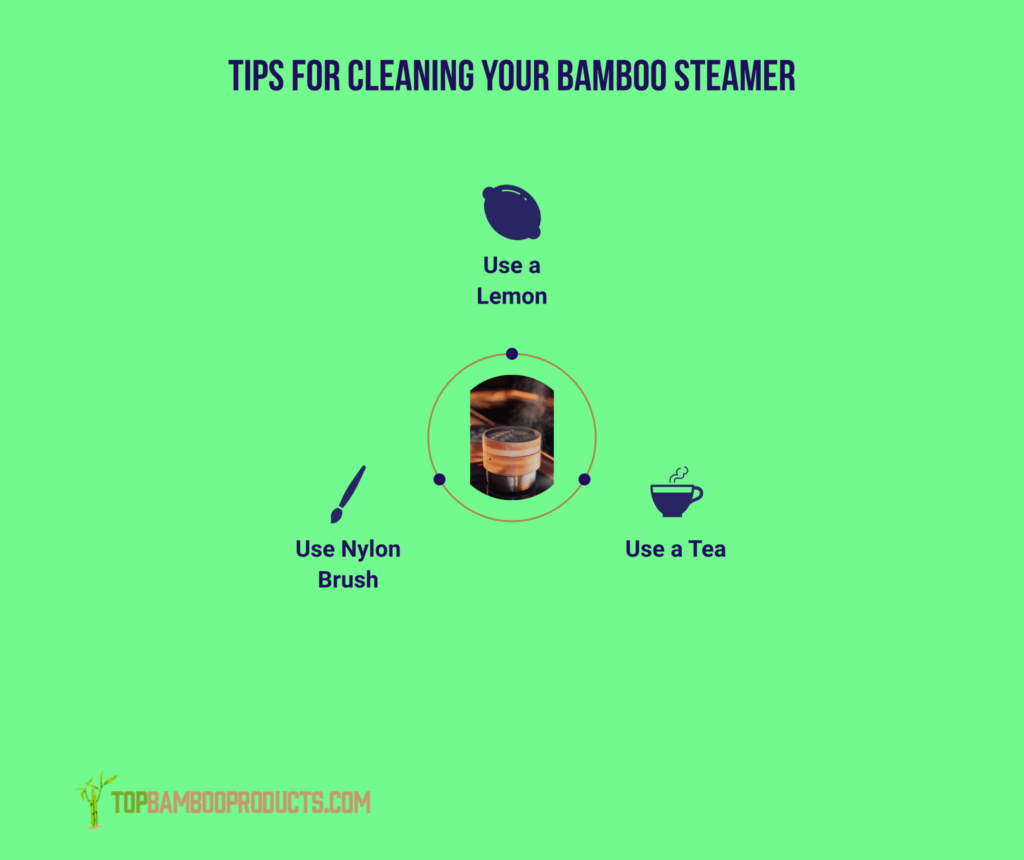
It’s crucial always to maintain your bamboo steamer clean. Your steamer will last longer if it is cleaned and maintained properly. Since bamboo is an organic component, you may clean your bamboo steamer using organic cleaning supplies. Here’s how to properly clean your bamboo steamer:
Use a Lemon
It would be best not to clean your bamboo steamer with harsh cleaning products. Guess what else? Lemon has a pleasant fragrance and is not overly harsh. The Lemon also does a fantastic job of cleaning and sanitizing dishes. Lemon may easily be used to clean a bamboo steamer. To clean the bamboo steamer, you only need to rub it with a slice of lemon. Lastly, rinse the steamer with clean water to check its cleanliness.
Use a Tea
Here’s another fantastic method for thoroughly cleaning your bamboo steamer. Sip on some black tea first. The tea should then be soaked in a basin of boiling water. Once the teabag has been soaked, carefully massage it on the bamboo steamer. Any food or germs may be removed with excellent success. Rinse the bamboo steamer with warm water to remove leftover tea or other impurities.
Use Nylon Brush
Please pay attention to this approach because you believe it needs to be updated. There is occasionally the choice to use the time-tested approach of simple scrubbing. However, because bamboo steamers are fairly fragile, be careful to use a soft nylon brush.
Steam the bamboo first to make it happen. You can be confident that your bamboo steamer will be thoroughly cleaned. Afterward, get a bowl of hot, soapy water and a soft-bristled nylon brush. Finally, rinse the bamboo steamer with cold water. Before using your steamer, ensure no soapy water remains on it.
Frequently Asked Questions
When steaming rice, how much water should I use?
It changes depending on the kind of rice you’re going to steam. However, the fundamental ratio is two cups of water to one cup of rice.
How can I tell when the rice has finished steaming?
The rice must be finished in about 30 minutes. The ideal texture for steamed rice is soft and sticky.
Is steaming a faster method than boiling?
Undoubtedly, steaming takes less time than boiling. Additionally, steaming rather than boiling food is usually preferable.
For a bamboo steamer, do you boil the water?
In a wok, bring water to a boil. 1.5 inches of water should be added to a wok and heated to a rolling boil. Steamer baskets should be lined. Lining the steaming baskets is crucial if you’re steaming buns and baos to prevent sticking.
When steaming rice, is water added?
Give your rice at least ten minutes of pre-soaking. Once the rice has been drained and transferred to a shallow, resistant to heat container which will fit in the steamer, add the water. Place in a steamer with cold water that is not quite boiling (the rice should not be cooked in hot water).
Final Thoughts
Rice may be prepared in a bamboo steamer for a tasty meal. The above-described procedures can help you produce precisely cooked rice with a fluffy and light texture. The proper amount of water and ensuring the rice is distributed evenly in the steamer basket are essential for success. By including various spices or herbs, you may alter the taste and consistency of your rice with a little experience and trial. So why not try this cooking technique and have a delicious and nutritious meal right now? Do you want to know how to clean bamboo sushi mat? Click Here!
0Shares


